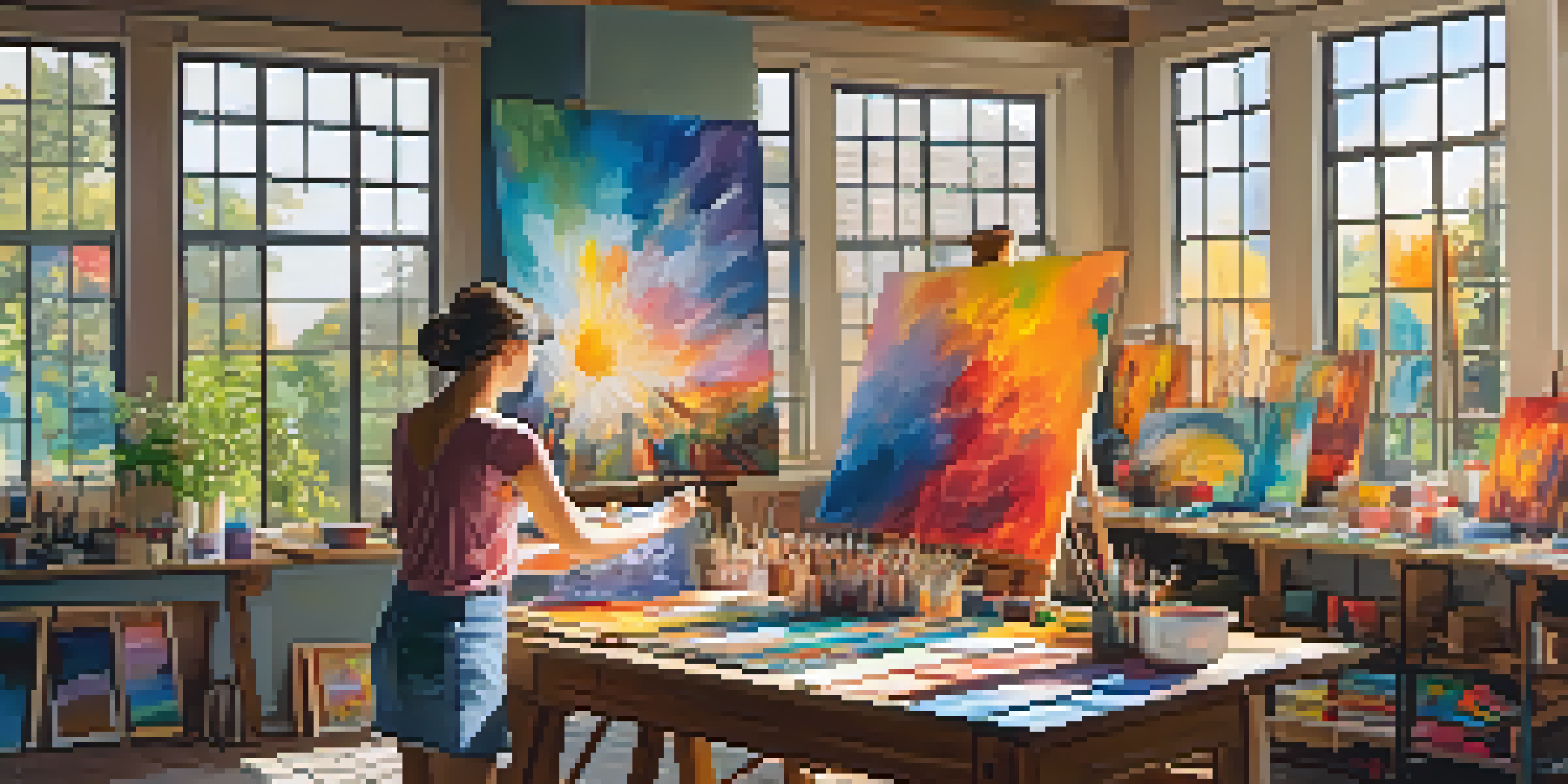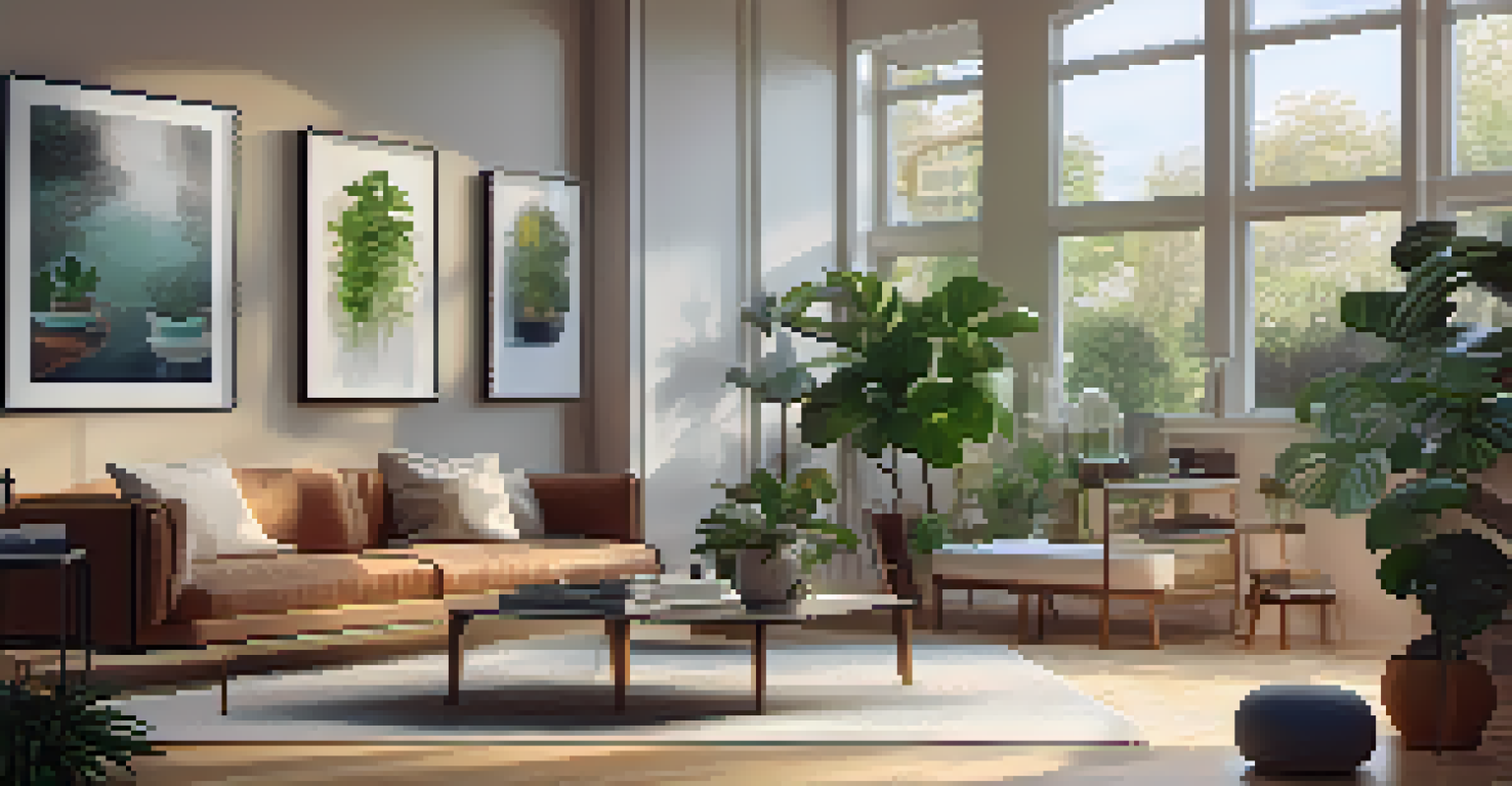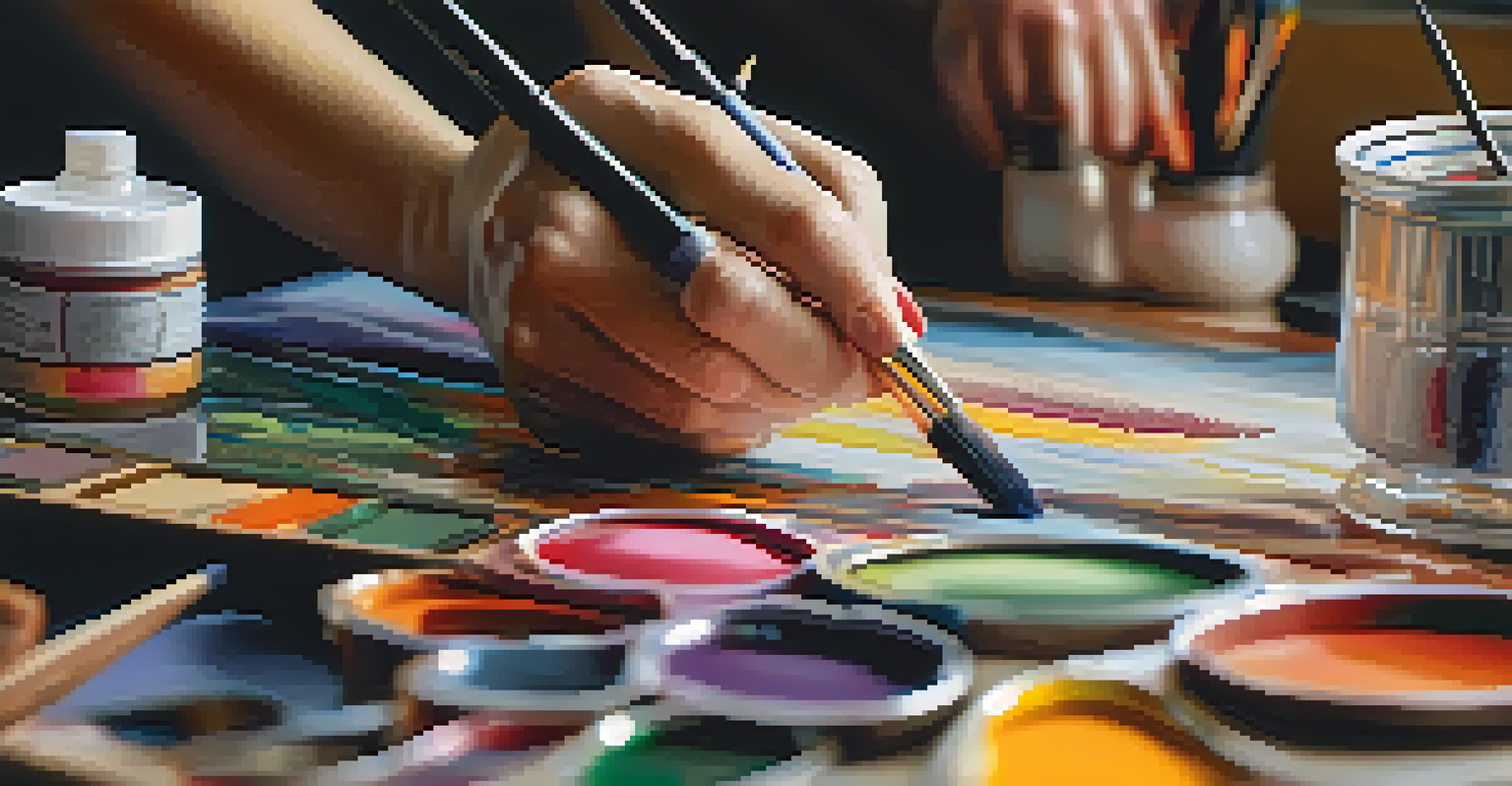Art Market Trends: The Influence of Social Media Platforms

Understanding the Art Market's Growth Through Social Media
In recent years, the art market has experienced a notable transformation, largely influenced by the rise of social media. Platforms like Instagram and Pinterest have become vital spaces for artists and collectors alike, allowing them to showcase their work and connect with audiences globally. This shift has not only democratized the art world but has also opened up new revenue streams for artists who can now reach potential buyers without traditional gallery representation.
Social media is the ultimate equalizer. It gives a voice and a platform to anyone willing to engage.
As more artists share their creations online, the visibility of diverse art forms has increased, breaking away from conventional norms. This accessibility allows art enthusiasts to discover emerging talents and unique pieces that might have been overlooked in the past. Consequently, social media acts as a catalyst for innovation, encouraging artists to experiment with styles and themes that resonate with a broader audience.
Moreover, the art market's growth reflects a change in consumer behavior, with younger generations increasingly seeking art through digital channels. This trend signifies a shift from traditional buying methods, as collectors now prefer the convenience and immediacy that social media offers. As a result, the art market is evolving, adapting to meet the demands of a tech-savvy audience.
How Social Media Platforms Drive Art Sales
Social media has transformed the way art is marketed and sold, with platforms providing a direct line of communication between artists and buyers. For instance, Instagram's visual nature makes it an ideal platform for artists to display their work in a compelling manner, often leading to immediate sales or commissions. This direct engagement fosters a sense of community and connection, making the purchasing process more personal and relatable.

Additionally, social media influencers and art collectors are increasingly leveraging their platforms to promote artwork. By showcasing pieces they love or curating collections, they can significantly impact trends and purchasing decisions among their followers. This phenomenon illustrates how social media not only facilitates sales but also shapes the taste and preferences of the art-consuming public.
Social Media Transforms Art Sales
Platforms like Instagram allow artists to directly engage with buyers, revolutionizing how art is marketed and sold.
Furthermore, the rise of online marketplaces integrated with social media features enables seamless transactions. This combination allows buyers to purchase art instantly while engaging with the artist’s story or process. As a result, the traditional gallery model is being augmented, creating a more dynamic and interactive art market.
The Role of Influencers in the Art Market
Influencers play a pivotal role in shaping art market trends, as their endorsements can lead to significant visibility for artists. Their ability to reach vast audiences allows them to introduce lesser-known artists to potential buyers, effectively bridging the gap between creators and consumers. This not only boosts the artist's profile but also enhances the influencer's credibility as a tastemaker in the art world.
Art is not what you see, but what you make others see.
For example, when a well-known influencer shares an artist's work on their platform, it can lead to a surge in interest and sales, sometimes overnight. This phenomenon emphasizes the power of social proof—people are more likely to buy art that they see others appreciating. Consequently, artists must navigate this landscape carefully, choosing collaborations that align with their brand and values.
Moreover, influencers often curate virtual exhibitions or art challenges that engage their followers, further amplifying the reach of participating artists. These initiatives not only promote individual works but also foster a sense of community among artists and collectors, creating a vibrant ecosystem where creativity thrives.
Emergence of Virtual Art Shows on Social Media
The COVID-19 pandemic accelerated the shift towards virtual art shows, with many galleries and artists turning to social media to host online exhibitions. These digital events have allowed artists to showcase their work to a global audience without geographical limitations, making art more accessible than ever. Social media platforms serve as an excellent medium for these exhibitions, enabling interactive experiences through live streams and Q&A sessions.
Virtual art shows not only cater to existing collectors but also attract new audiences who may have been hesitant to attend in-person events. This trend has led to an influx of engagement, as viewers can explore art from the comfort of their homes while interacting with artists in real-time. As a result, the traditional art-viewing experience is being redefined, blending convenience with interactivity.
Influencers Shape Art Trends
Art influencers significantly enhance visibility for emerging artists, bridging the gap between creators and collectors.
Additionally, these online exhibitions often harness the power of hashtags and targeted advertising, reaching specific demographics interested in art. This strategic approach ensures that the right audiences are being engaged, ultimately driving sales and promoting artist visibility. As the art world continues to embrace these digital innovations, we can expect to see even more creative approaches to showcasing art.
Social Media as a Tool for Art Education
Beyond sales and marketing, social media serves as a valuable resource for art education, offering a wealth of information at our fingertips. Artists and educators alike are utilizing platforms to share tutorials, behind-the-scenes processes, and discussions about art history. This accessibility not only empowers aspiring artists but also cultivates a more informed audience that appreciates the nuances of various art forms.
For instance, platforms like YouTube and TikTok have become hotspots for bite-sized art lessons, attracting viewers eager to learn new techniques. These short, engaging videos make art education more approachable, breaking down complex concepts into digestible content. As a result, a new generation of artists is emerging, inspired to create and experiment in ways that were previously less accessible.
Moreover, social media encourages collaboration among artists, fostering an environment of shared learning and creativity. Through challenges and partnerships, artists can exchange ideas and techniques, enriching their own practices while contributing to a larger community. This collaborative spirit enhances the art landscape, making it more dynamic and inclusive.
Challenges of the Art Market in the Social Media Age
While social media has brought numerous benefits to the art market, it also presents challenges that artists and collectors must navigate. One significant concern is the oversaturation of content, as the sheer volume of posts can make it difficult for any single artist to stand out. In such a crowded space, artists must constantly innovate and engage their audiences to maintain visibility.
Additionally, the pressure to maintain a strong social media presence can be overwhelming for artists who may prefer to focus on their craft. The expectation to produce regular content can detract from the time and energy needed for actual art-making. Balancing artistic integrity with the demands of social media can be a significant hurdle for many.
Virtual Shows Redefine Art Access
The rise of virtual art shows on social media has made art more accessible to global audiences, transforming the traditional viewing experience.
Another challenge is the potential for misinformation and misrepresentation in the digital space. With the ease of sharing, artworks can be misattributed or misrepresented, leading to confusion among collectors and art enthusiasts. This highlights the importance of transparency and integrity within the art community, ensuring that artists receive proper credit for their work.
Future Outlook: Social Media's Ongoing Impact on the Art World
Looking ahead, the influence of social media on the art market is likely to continue evolving, driven by technological advancements and changing consumer behaviors. As platforms develop new features—such as augmented reality tools for viewing art—artists will have more opportunities to engage with their audiences in innovative ways. This will further blur the lines between the digital and physical art worlds.
Moreover, as generational shifts occur, younger collectors are expected to prioritize authenticity and meaningful connections with artists over traditional forms of purchasing. This trend suggests that social media will remain a vital tool for artists to tell their stories and foster genuine relationships with their audience. The emphasis on storytelling will likely shape future art marketing strategies.

Ultimately, the art market's future will hinge on adaptability and resilience, as artists and collectors embrace the opportunities that social media presents. By harnessing the power of these platforms, the art community can continue to thrive, fostering creativity and connection in an ever-changing landscape.